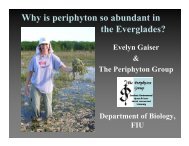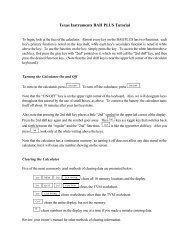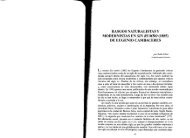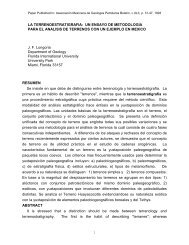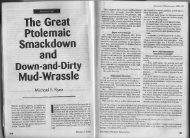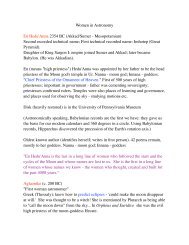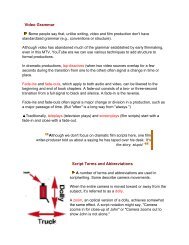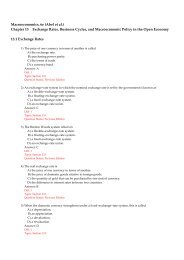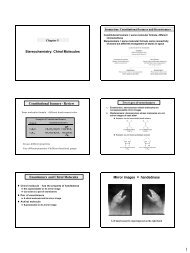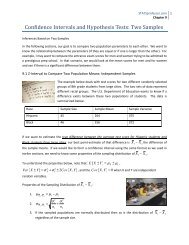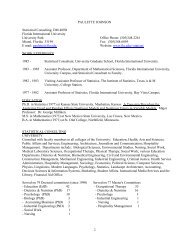Viable Titer and Pure Culture
Viable Titer and Pure Culture
Viable Titer and Pure Culture
- TAGS
- viable
- titer
- culture
- www.fiu.edu
You also want an ePaper? Increase the reach of your titles
YUMPU automatically turns print PDFs into web optimized ePapers that Google loves.
thoroughly.<br />
4. Using a fresh, sterile pipette for each succeeding step, transfer 1ml from the 10 -3 dilution to the<br />
10 -4 dilution blank, then from the 10 -4 to the 10 -5 , then from the 10 -5 to the 10 -6 . Each time, the<br />
sample transferred must be thoroughly mixed with the dilution fluid before being transferred to<br />
the next tube. Use the Vortex-mixers. The dilution <strong>and</strong> plating outline is like the one in<br />
Figure 6.11 in the text (page 146, 11th Edition of Brock).<br />
5. Mark one plate for each tube dilution on the bottom with the dilution it will receive. From<br />
each dilution beginning with 10 -2 dilution pipette 50 μL of dilution fluid onto each of the<br />
corresponding five sterile petri plates. Be sure to use aseptic technique. The lab instructor<br />
will demonstrate.<br />
6. Take a glass spreader soaking in alcohol, shake of excess alcohol, <strong>and</strong> pass the spreader quickly<br />
though a Bunsen burner flame. The spreader is sterilized by the alcohol, the flame only<br />
removes (rapidly) any excess alcohol.<br />
7. Then using the cool, sterile spreader, spread the aliquot on the plate all over the surface of the<br />
agar. Continue to spread all other plates, each with a sterile spreader.<br />
8. Invert the plates <strong>and</strong> stack into pipette canisters <strong>and</strong> place in the incubator or at room<br />
temperature until next period (2 days).<br />
Lab Session Two<br />
<strong>Viable</strong> <strong>Titer</strong><br />
1. Retrieve your plates. Count the number of colonies on each plate beginning with those of the<br />
highest dilution. Be sure to count all colonies. When the number of colonies exceeds 200,<br />
those plates are considered "Too Numerous To Count" <strong>and</strong> can be recorded in your results as<br />
TNTC.<br />
2. Do the CFU counts make sense? Are there about 10X less between diltuions?<br />
3. Calculate the viable titer for each plating medium. Record your results on the blackboard with<br />
those of the rest of the class.<br />
Population Survey<br />
1. Find five different colonies that are well isolated from other colonies. Circle each on the back<br />
of the plate <strong>and</strong> assign a number to each. You will need to refer back to each colony later.<br />
2. Describe each colony morphology. Refer to the Appendix to describe the size, shape, margin,<br />
elevation, consistency, color, transparency <strong>and</strong> other terms to give an accurate description of<br />
the colonies.<br />
3. From each marked colony, preform the Gram Stain using a freshly sterilized loop for each<br />
colony. It is important to keep the Gram Stain observation of each colony with the colony<br />
description: they are properties of the same organism.<br />
4. Are all the colonies composed of only one cell type? What types of cells predominate in your<br />
population survey?<br />
Begin to Obtain a <strong>Pure</strong> <strong>Culture</strong><br />
1. Choose one colony that appears to be composed of only one cell type.<br />
2. Flame an inoculating loop, when cool gently touch it to the surface of the colony you will<br />
restreak onto a Nutrient Agar plate.<br />
3. Streak these cells as a primary streak on the surface of a Nutrient Agar Plate. This streak<br />
should not occupy more than 1/4 of the plate (see the diagram).<br />
4. Flame the loop, allow it to cool <strong>and</strong> streak across the primary streak once or twice <strong>and</strong> then



